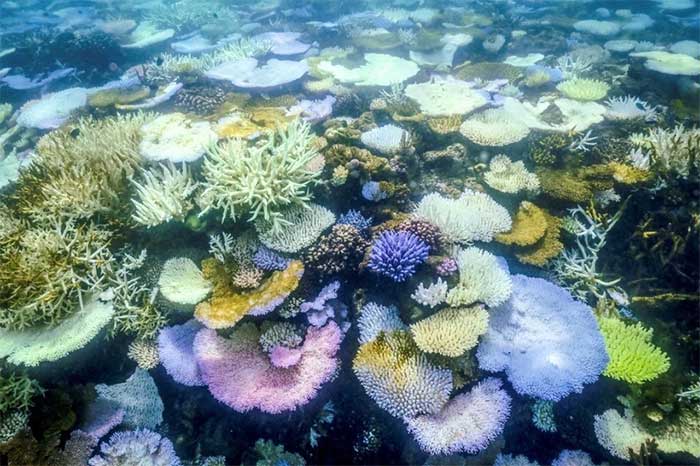A devastating outbreak threatening sea urchins poses a risk to global coral reefs, spreading to the tropical waters of the Coral Triangle, extending offshore Southeast Asia and the Great Barrier Reef. This warning comes from Israeli scientists in the journal Current Biology.

Coral bleaching around Lizard Island in the Great Barrier Reef (Australia) on April 5, 2024. (Photo: AFP/TTXVN).
Mr. Omri Bronstein, a zoologist from Tel Aviv University and the Steinhardt Museum of Natural History, stated that the pathogen spreads rapidly and aggressively, leading to the disappearance of many sea urchin populations in just two days, making it difficult to assess how many have died.
The outbreak is believed to be spreading eastward to the tropical waters of the Coral Triangle, reaching offshore Southeast Asia and the Great Barrier Reef.
Mr. Bronstein described this outbreak in sea urchins as a “mower” for coral reefs, as they remove algae that block sunlight essential for coral growth.
In Aqaba Bay, no organisms fulfill this role, leading to a significant growth of algae coverage.
He emphasized that when the die-off of sea urchins began in the Red Sea, scientists suspected the cause could be pollution or something very serious.
A group of Israeli scientists is currently collaborating with local researchers to map the outbreak and gather more details, collecting DNA samples from various water regions to assess the interactions of marine organisms with their environment.
This outbreak in sea urchins was first detected in Aqaba Bay a year ago, linked to a series of sea urchin deaths in the Red Sea, the Arabian Peninsula, and Reunion Island off the coast of Madagascar.


















































